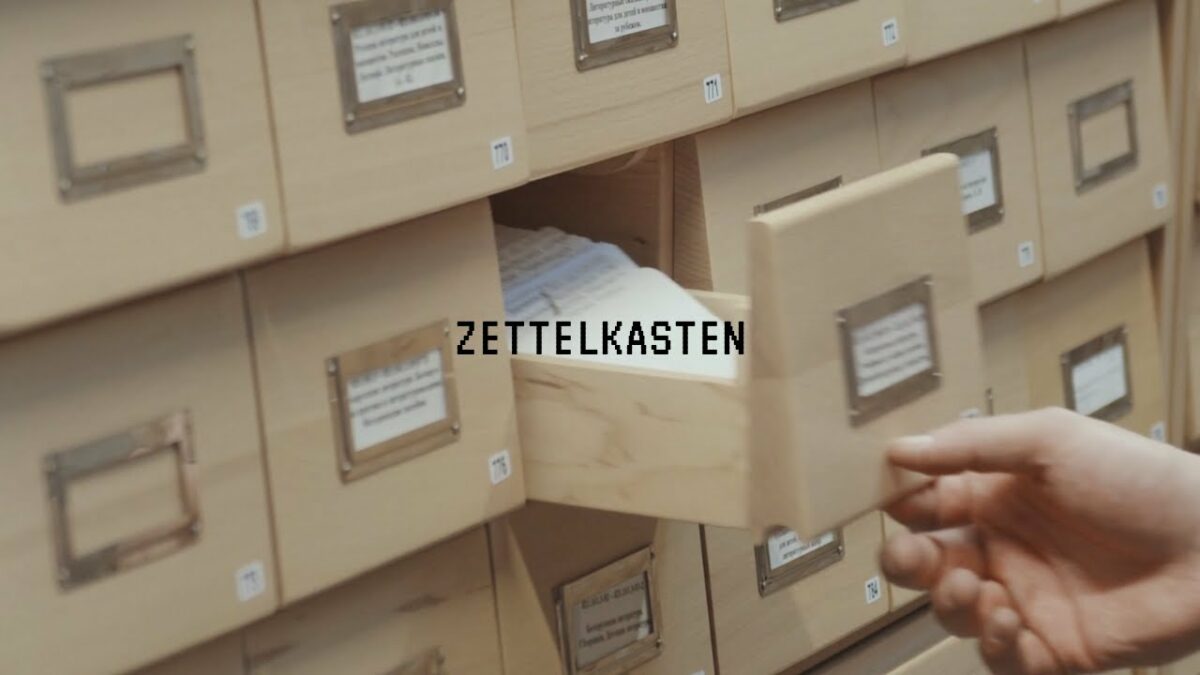The Zettelkasten technique is a note-taking technique introduced by the German sociologist, Niklas Luhmann. Luhmann was a very prolific sociologist. During his 40 years of research, he has produced 70 books and 400 articles.
His prolific secret is the Zettelkasten writing technique . As a modern academic, Luhmann including an oldschool . He only had paper, pen, and typewriter to take notes.
What is the Zettelkasten Note-taking Technique?
Zettelkasten in German is a combination of two words, “Zettel” means a small note (a note) or a piece of paper and “Kasten” means a box. Zettellkasten is simply a box containing index records (slip box) .
Luhmann used a cabinet with 4 boxes down and 6 rows of boxes to the side. He used the cupboard to store his notes. In the corner of the paper, Luhmann wrote down the topic of the note on the paper so that he did not have trouble finding notes and did not have to open the contents of the notes one by one to find out the topic of his notes.
In principle, this note-taking technique uses a note-taking system that is interconnected between topics. The problem of students so far is taking notes without knowing the relationship between subject matter so that it does not form a comprehensive understanding. Moreover, there are many note-taking media that we use so that the knowledge we record is scattered and eventually lost, forgotten.
Advantages of the Zettelkasten Note-taking Technique
The benefits and advantages of the Zettelkasten note-taking technique include:
1. Zettelkasten links topics systematically
Just like how the brain works, index notebooks are like neurons in the brain. Random ideas have interconnections, for example, the topic of public communication is related to the sociology of communication. The relationship is indicated by a tag code or color, depending on the tagging method you apply.
By tagging topics with categories, it will be easier for you to connect ideas. You will also find it easier to understand the phenomenon as a whole.
2. You won’t get tired of reading
Have you ever found reading too tiring? You’ve finally marked all the sections of your book with a highlighter.
However, by using the Zettelkasten method, you will be more focused on noting the important parts. Taking notes in Zettelkasten is not necessary to write all parts of the book. You only need to divide it per paper per topic so you won’t get tired. You will also be more excited to enrich your “knowledge bank” in your Zettelkasten!
3. Learn to be more efficient
The Zettelkasten note-taking method helps you create a working system for conducting information research, structure thinking, and developing your thinking.
With the system, you have a productive pattern every time you study . If you are consistent, you will collect tons of ideas in no time. This is because you are not too stressed and overwhelmed by the amount of material you have to learn.
4. Better memory and creativity
The essence of Zettelkasten is connecting ideas. When you make a new note about a topic, you need to revisit the old notes so you can decide which category you just noted falls into.
This is what can train your memory as well as your creativity in deciding category marks or themes.
How to Take Notes Using the Zettelkasten Method
The Zettelkasten principle you need to follow. Read more here.
To create a Zettelkasten note is very easy! Follow these steps to create your own version of the Zettelkasten knowledge bank.
- You don’t need to have a big wardrobe with 24 lockers. Just prepare a folder or shoebox.
- Take a piece of paper. Write one and only one idea on paper. Write the explanation in the middle. Use your own language to avoid plagiarism. Don’t forget to put a reference from where you got the idea.
- When the paper is arranged in a grid, make sure there is a section of the paper that is easy to see when looking, for example at the top of the paper.
- Write in that section the name of the topic. Put the paper number. For example:
- “1 Finance”
- You can also add category tags (tags) related to the topic. For example, the paper “1 Finance” explains the concept of money, then you can put the tags “#money” or “#economy” and so on.
- Add the next paper according to the paper sequence number. When you have found a connection, don’t forget to write the number of the related paper at the bottom right of the paper.
- Create index notes to make it easier for you to find bookmarks. For example, #finance is on paper numbers 1, 2, 1/1, and so on.
Well, how? Easy isn’t it? Try starting from a simple category. As notes/papers grow, you can add other categories and bookmarks that can make your Zettelkasten notes richer.
Those are the tips for noting the Sinaumedia version of Zettelkasten . Share this information with your friends or teachers, yes, and start making Zettelkasten together!
***

